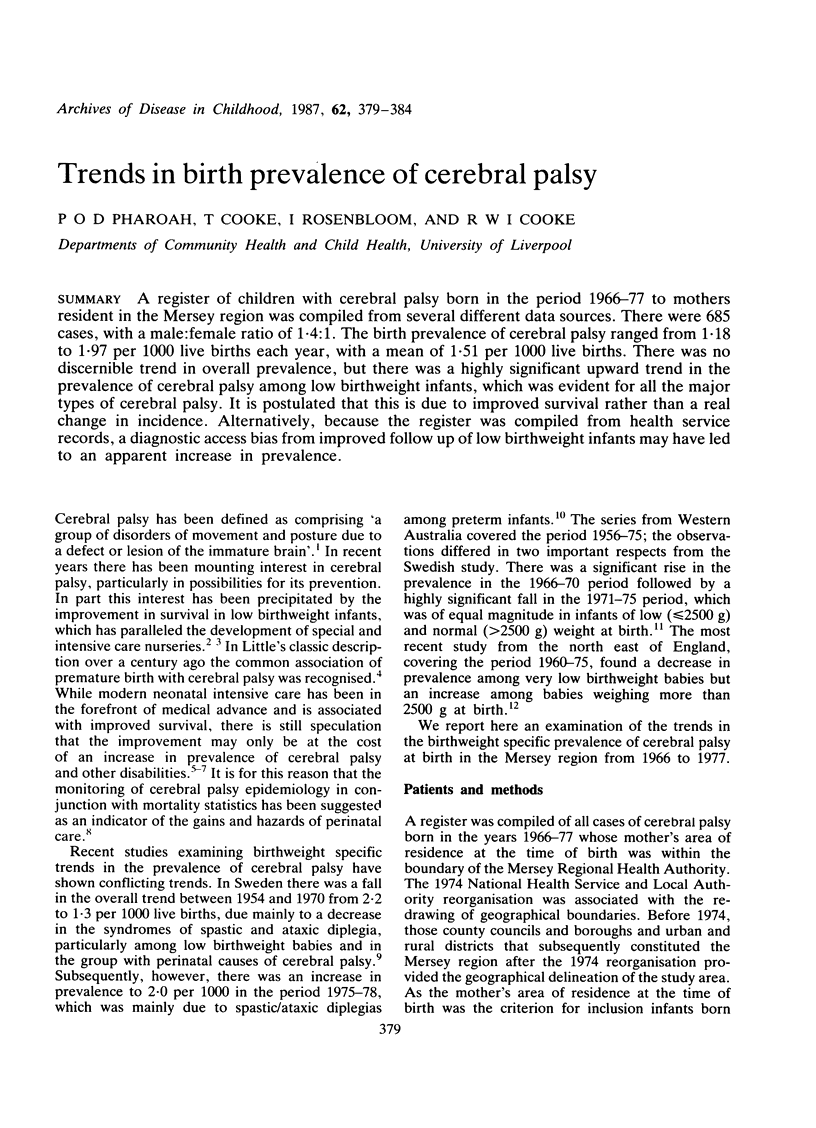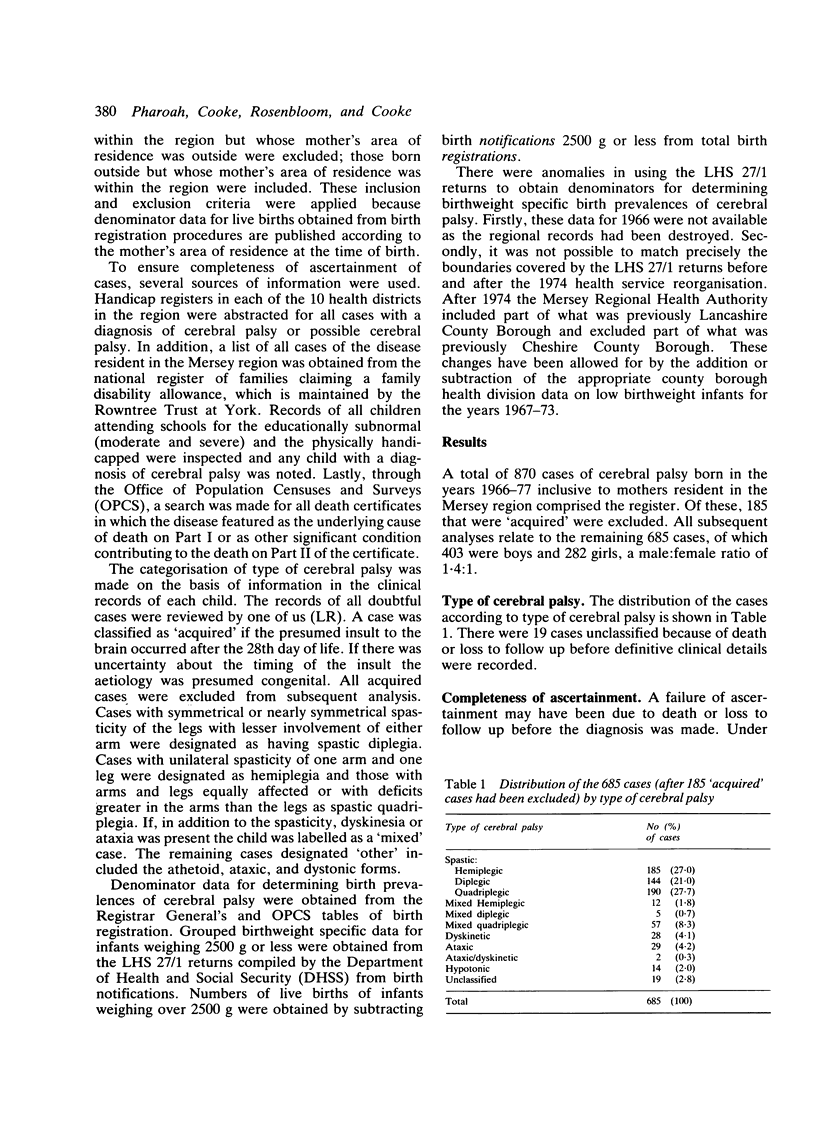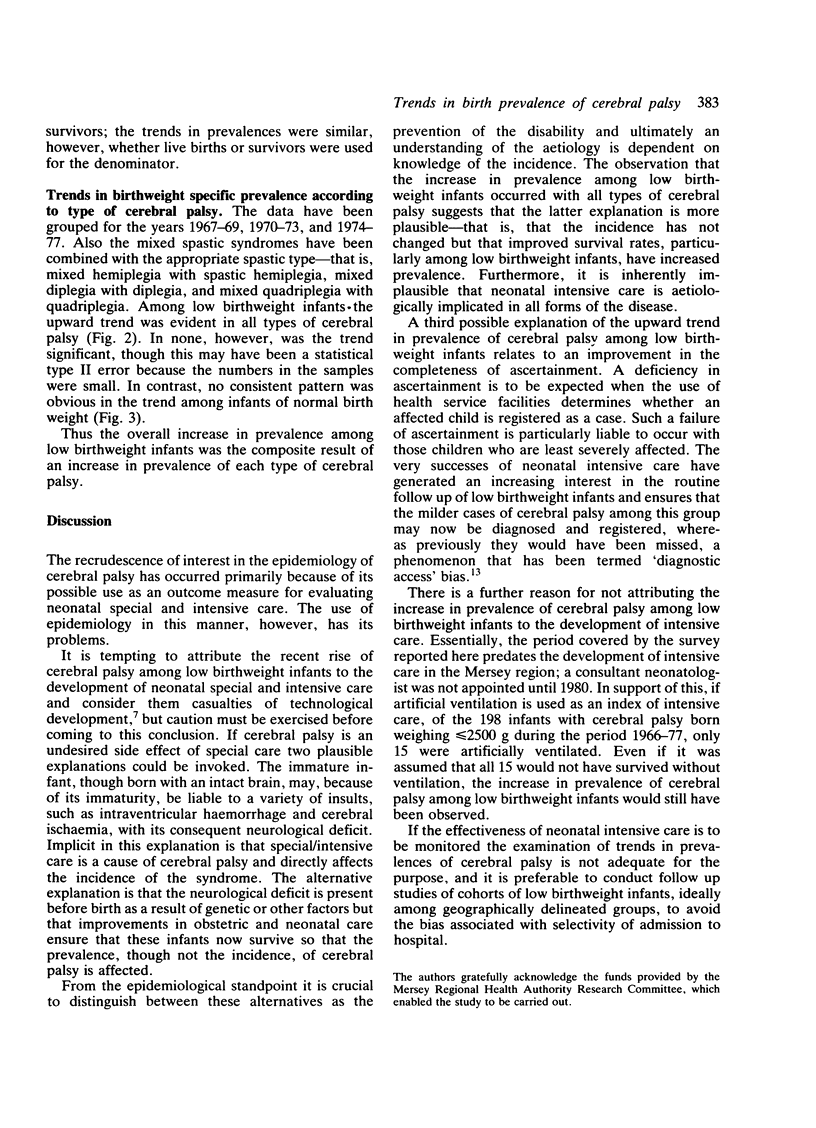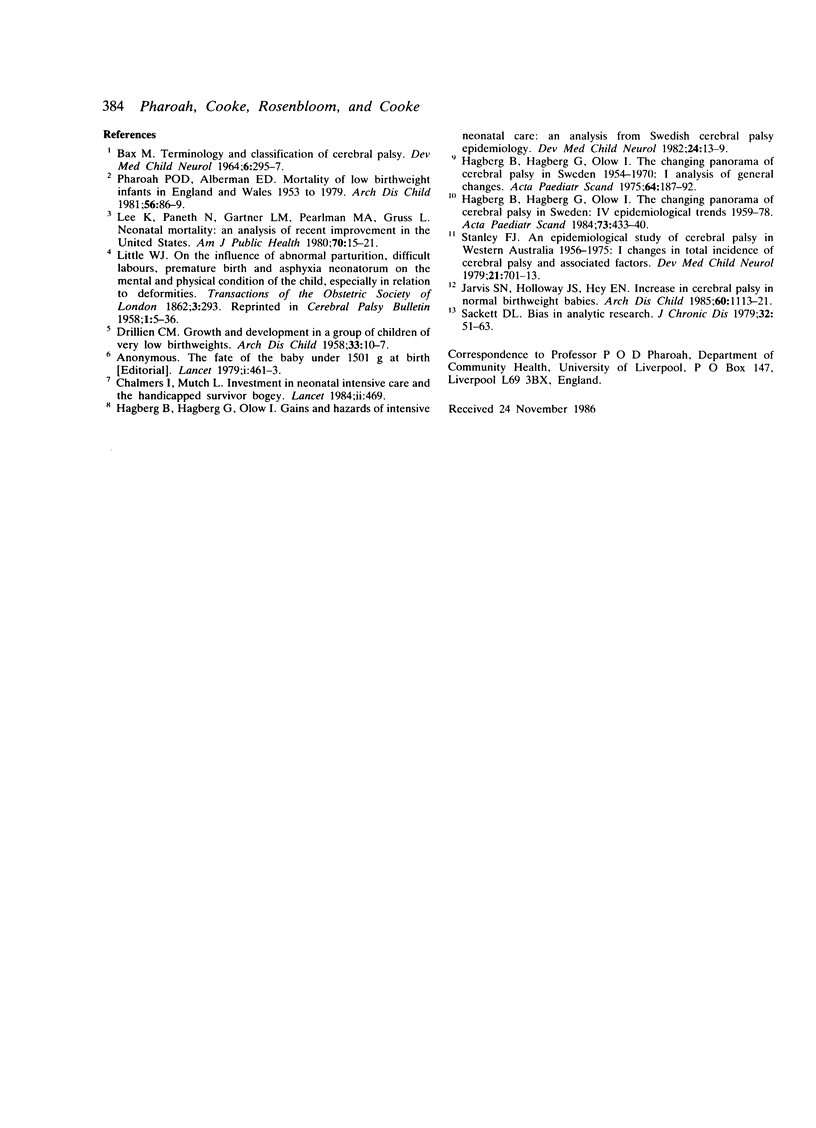Abstract
A register of children with cerebral palsy born in the period 1966-77 to mothers resident in the Mersey region was compiled from several different data sources. There were 685 cases, with a male:female ratio of 1.4:1. The birth prevalence of cerebral palsy ranged from 1.18 to 1.97 per 1000 live births each year, with a mean of 1.51 per 1000 live births. There was no discernible trend in overall prevalence, but there was a highly significant upward trend in the prevalence of cerebral palsy among low birthweight infants, which was evident for all the major types of cerebral palsy. It is postulated that this is due to improved survival rather than a real change in incidence. Alternatively, because the register was compiled from health service records, a diagnostic access bias from improved follow up of low birthweight infants may have led to an apparent increase in prevalence.
Full text
PDF





Selected References
These references are in PubMed. This may not be the complete list of references from this article.
- BAX M. C. TERMINOLOGY AND CLASSIFICATION OF CEREBRAL PALSY. Dev Med Child Neurol. 1964 Jun;6:295–297. doi: 10.1111/j.1469-8749.1964.tb10791.x. [DOI] [PubMed] [Google Scholar]
- Chalmers I., Mutch L. Investment in neonatal intensive care and the "handicapped survivor bogey". Lancet. 1984 Aug 25;2(8400):469–469. doi: 10.1016/s0140-6736(84)92947-7. [DOI] [PubMed] [Google Scholar]
- DRILLIEN C. M. Growth and development in a group of children of very low birth weight. Arch Dis Child. 1958 Feb;33(167):10–18. doi: 10.1136/adc.33.167.10. [DOI] [PMC free article] [PubMed] [Google Scholar]
- Hagberg B., Hagberg G., Olow I. Gains and hazards of intensive neonatal care: an analysis from Swedish Cerebral palsy epidemiology. Dev Med Child Neurol. 1982 Feb;24(1):13–19. doi: 10.1111/j.1469-8749.1982.tb13578.x. [DOI] [PubMed] [Google Scholar]
- Hagberg B., Hagberg G., Olow I. The changing panorama of cerebral palsy in Sweden 1954-1970. I. Analysis of the general changes. Acta Paediatr Scand. 1975 Mar;64(2):187–192. doi: 10.1111/j.1651-2227.1975.tb03820.x. [DOI] [PubMed] [Google Scholar]
- Hagberg B., Hagberg G., Olow I. The changing panorama of cerebral palsy in Sweden. IV. Epidemiological trends 1959-78. Acta Paediatr Scand. 1984 Jul;73(4):433–440. doi: 10.1111/j.1651-2227.1984.tb09951.x. [DOI] [PubMed] [Google Scholar]
- Jarvis S. N., Holloway J. S., Hey E. N. Increase in cerebral palsy in normal birthweight babies. Arch Dis Child. 1985 Dec;60(12):1113–1121. doi: 10.1136/adc.60.12.1113. [DOI] [PMC free article] [PubMed] [Google Scholar]
- Lee K. S., Paneth N., Gartner L. M., Pearlman M. A., Gruss L. Neonatal mortality: an analysis of the recent improvement in the United States. Am J Public Health. 1980 Jan;70(1):15–21. doi: 10.2105/ajph.70.1.15. [DOI] [PMC free article] [PubMed] [Google Scholar]
- Pharoah P. O., Alberman E. D. Mortality of low birthweight infants in England and Wales 1953 to 1979. Arch Dis Child. 1981 Feb;56(2):86–89. doi: 10.1136/adc.56.2.86. [DOI] [PMC free article] [PubMed] [Google Scholar]
- Sackett D. L. Bias in analytic research. J Chronic Dis. 1979;32(1-2):51–63. doi: 10.1016/0021-9681(79)90012-2. [DOI] [PubMed] [Google Scholar]
- Stanley F. J. An epidemiological study of cerebral palsy in Western Australia, 1956-1975. I: Changes in total incidence of cerebral palsy and associated factors. Dev Med Child Neurol. 1979 Dec;21(6):701–713. doi: 10.1111/j.1469-8749.1979.tb01691.x. [DOI] [PubMed] [Google Scholar]


